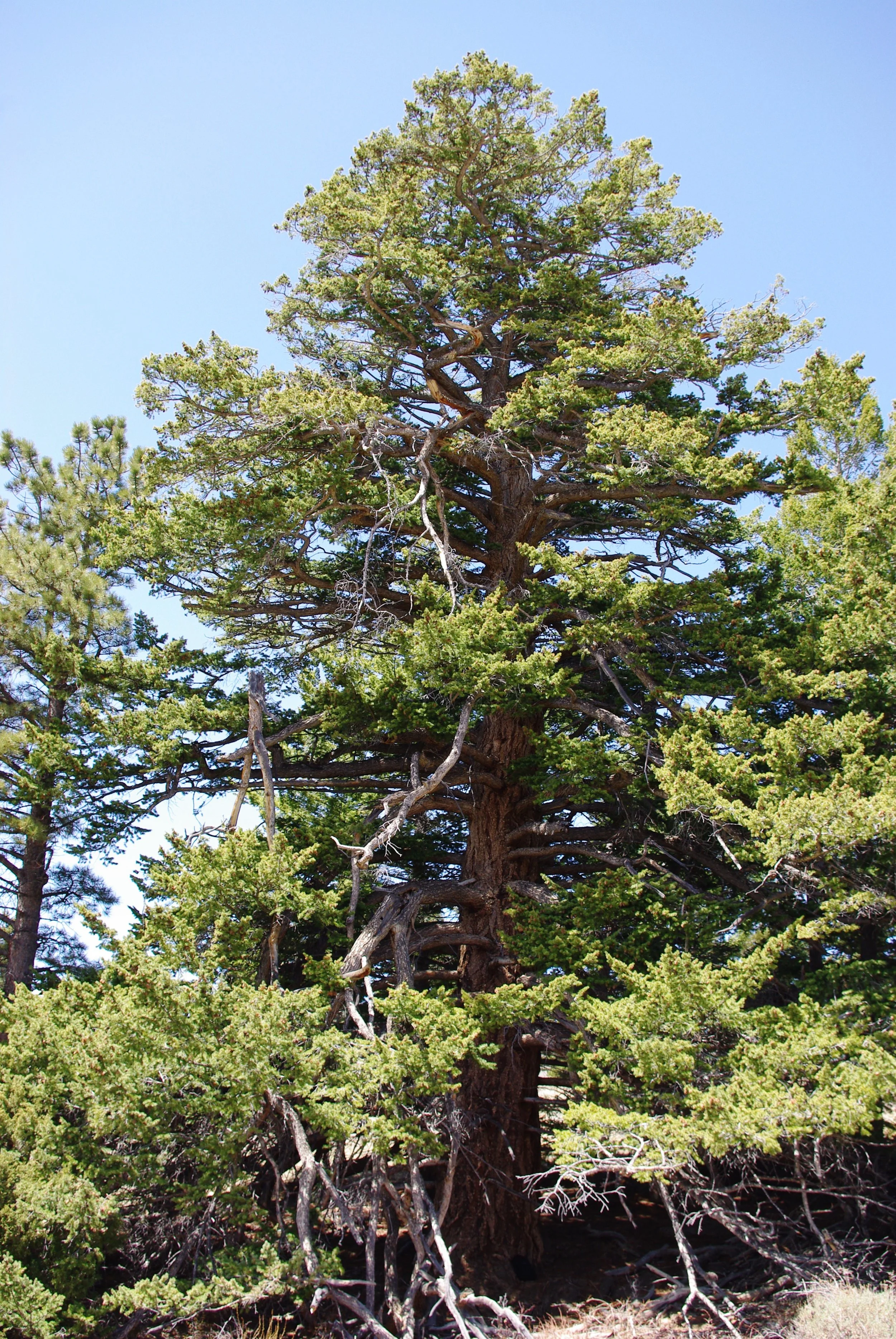Douglas fir (Pseudotsuga menziesii)
First place champion Douglas fir near Poncha Springs.
Species info:
Needles: Single, flat, 1 inch long, soft and blunt-tipped; arranged spirally but appearing flattened; fragrant when crushed.
Leaflets: None (true needles, not compound leaves).
Leaf Surface: Uniform green on both sides; stomatal lines faint.
Bark: Smooth and light-colored with resin blisters on young trees; thick, reddish-brown, and deeply furrowed on mature trunks.
Twigs: Smooth, brown, with rounded buds that are pointed and not resinous.
Flowers: Inconspicuous; male and female structures present on the same tree.
Fruit: Seed-bearing cones that mature in one season, 3 inches long, pendulous; distinctive three-pointed bracts protrude from each scale (“mouse tails”).
Botanical: Pseudotsuga menziesii
Family: Pinaceae
Mature Height: 80–100 feet in Colorado (up to 138 feet in exceptional sites)
Canopy Spread: 20–30 feet; narrow conical form
Foliage Type: Evergreen (needled)
Tree Shape: Upright, pyramidal to conical; branches slightly pendulous
Growth Rate: Medium (1–2 feet per year under good conditions)
Flower: Inconspicuous
Fruit: Cones
Fall Color: Evergreen—no fall color change
Water Use: Moderate; prefers moist, well-drained soils but can tolerate periodic drought once established
Hardiness: Zones 4–6
Soil Preference: Best in well-drained loams; can struggle in heavy clay or poorly drained urban soils
Sun Exposure: Full sun; tolerates some partial shade but performs best with abundant sunlight
Wildlife Value: Cones and seeds used by squirrels and birds; dense branches offer cover for birds; host for native insect species
Wood: Highly valued timber species—strong, durable, and used for structural lumber, beams, and construction
Pests/Pathogens: Spruce budworm, Douglas-fir tussock moth, and Douglas-fir beetle (serious pests in forest settings), Cooley spruce-gall adelgid (alternate host), and generally healthy in landscape settings when properly sited
Planting Recommendations: This Colorado native is recommended for most areas, but it can struggle in compacted or heavy clay urban soils.
Information Sources:
Front Range Tree Recommendation List
Michael Dirr, Manual of Woody Landscape Plants (University of Georgia, 1990)
Michael Kuhns, Trees of Utah and the Intermountain West (Utah State University Press, 1998)


